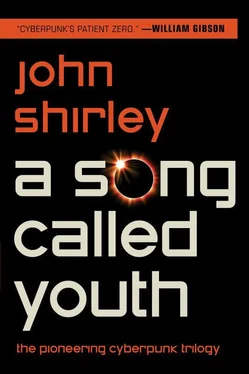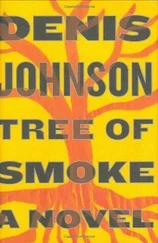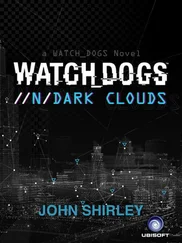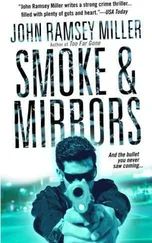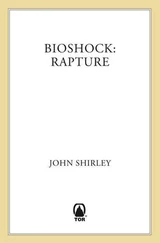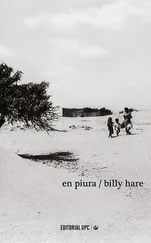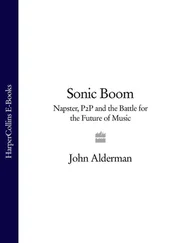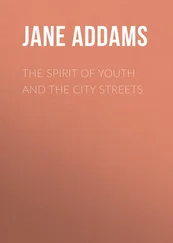Smoke’s eyes were drawn by movement; the high movement of electric light. One of the Armies’ aircraft. There—over the collapsed roof of the warehouse. A USAF jumpjet. Recon patrol, maybe; hovering, and bobbing up and down the way a jet shouldn’t be able to, moving almost like a kite. Casimir force combined with standard thrust, tiltable jets. Now and then it darted a searchbeam into windows.
Ought to close this one before it notices us, Smoke thought.
But then the jumpjet veered off, due east. Gone.
Drone of voices behind him. But he was turned outward, to the mortuary peace of the harbor.
A movement of cold air—too slow to be a breeze, more of an oozing than a blowing, numbing Smoke’s nose and cheeks, making his ears sting. It was scented with the brine and the clean rot of the ocean—strange there could be a clean rot but in the absence of men it was so—and a trace of oil, and woodsmoke.
A fog was curling in, sending wraith outriders, and tentatively entwining rusty hulls, the wooden snags of pylons, battleship superstructures, and sailing-yacht yardarms. Under the wrecks, the sea drew all light into itself. And yet there was movement there; Smoke thought he saw the ghostly figures of men and women running in slow motion through streets where flame unfurled… and this phantasm passed, replaced by the marching of a great army, an army of men in mirrored helmets, their faces hidden in circles of opacity—
Someone was speaking to him. Had been speaking to him for a while. He knew it, just that suddenly. “Smoke! Open your ears!” It was Steinfeld.
“Maybe ’e’ deaf,” Willow suggested sincerely, “from the shells. I lost some of me ’earing when they was shellin’.”
Smoke turned, and Richard Pryor flapped against the sudden motion. “I was thinking, is all,” Smoke said.
“You were daydreaming.” Steinfeld said. “Best not to show a light.”
Smoke closed the blacked-out windows, locked them in place at the bottom.
“And come over here, Smoke. You can hold on to your independence, if you want to keep up the pretense, but I want you to contribute to this.”
Smoke nodded, feeling claustrophobic, cheeks and nose tingling in the warmth of the sun-charged heater glowing cherries of red light to his left. The room was rectangular, high-ceilinged—once someone’s bedroom. Now the main furnishings were a blond-wood desk, one leg missing, that corner supported by stacked bricks, a few cracked wooden chairs, and a wooden crate. There were two pools of light, at each end of the room—a reddish pool from the heater and a yellow one from Steinfeld’s lantern, on a dented cabinet behind his desk. Hard-Eyes and Jenkins leaned against the wall to the right of the desk. They stood there, Smoke guessed, to be near the door and so no one could get behind them. And for the first time he wondered if he’d made a mistake bringing Hard-Eyes here. Hard-Eyes was almost unreadable. The nickel-plated hunting rifle glinted like a frozen lightning bolt in his hands. Jenkins, rifle in hand, bulked beside him, the thundercloud.
Maybe, Smoke thought, these men want to kill us all, and turn us in for bounty. Or maybe they’re planning to locate Steinfeld’s black-market stuff. Kill us in our sleep, take the stuff.
Smoke wondered, but all he said was, “I saw a jumpjet. USAF, I think. Headed off east.”
Steinfeld frowned. Then he shrugged. “Can’t go running off every time the fox comes sniffing around, or it’ll catch us out of the henhouse…” He smiled. “I heard that one from an American soldier from Oklahoma.”
Smoke moved to stand against the wall, across from Hard-Eyes.
“You’ve got an in at both the camps, Smoke,” Steinfeld was saying.
“The Russians treat me best,” Smoke said, mostly to the crow. The crow made a ratcheting sound. “It was a surprise to me, too.”
“You hear a lot about the SA. Let’s collate what we’ve got, for Hard-Eyes and Jenkins. The SAISC was founded by a man named Predinger. An extremely conservative American millionaire. Far right as you can get without being locked up in an asylum. He founded it sometime in 1984, fittingly.
“Initially, the Second Alliance was to be a sort of, um, global security outfit to be used by any international corporation or conglomerate who needed it—something like Xe or Halliburton Security but bigger and with more… agenda.” Steinfeld shrugged and went on: “It soon became obvious that the SA was in fact an ‘antiterrorist’ intelligence outfit. Privately owned, to be sure. This was, of course, at a time when terrorists were beginning to make concerted bombing strikes and kidnappings against big business, especially if it was rooted in the United States or in the allied nations…” Steinfeld paused to sip from a cold cup of ersatz coffee. He grimaced and went on. “Not surprisingly, the Alliance concentrated on leftist underground political groups, and ignored the rightist variety. It placed a great many people under surveillance, anyone it suspected might have connections with Marxists and hard-core Jewish-rights activists. The SA ignored the anti-Israeli terrorists unless they were clearly anti-American Communists. After a period of surveillance they would take the ‘suspects’ in for ‘questioning’—something they’d do quite without legal authorization, but sometimes with sanction from the local authorities. About two-thirds of the ‘suspects’ were people with left-leaning tendencies but no actual connection with terrorists. Their inquisitors were always masked. Sometimes the suspects came out of it alive and only bruised, sometimes they disappeared entirely. But—the governments of the countries where the SA operated covered for them. The SA would claim it had fired some people who were ‘overzealous.’ The furor would die down and the SA would go back to its old activities… Radical activism continued to escalate, and in response the SA took to assassinating radical leaders it believed were aligned with activists. Most of the time it was assassinating the moderates who kept the extremists in check. It may have done this knowingly—knowing that when extremists filled the void, the frightened world would tend to tolerate—would welcome —the SA’s activities. It would grow in respectability and therefore in contacts; with contacts came power and influence. And, of course, all of this was augmented by Predinger’s judicious use of cold cash. Campaign contributions, soft money party donations, and some outright payoffs. Bribery was part of the SA’s ordinary, day-to-day operation. Once they almost went too far, even for their allies. Their Buenos Aires chief learned that two identified men on their kill list were in attendance at a leftist political rally in a Buenos Aires union hall. The SA simply blew up the hall. Two hundred people were killed. It was never proved against Predinger’s people. There is some evidence that the CIA and Argentina’s own secret police may have been of covert assistance—”
Hard-Eyes broke in, “This sounds like a lot of propaganda. Left-wing conspiracy-theory stuff. The SA is right-wing, sure—too far right to be running things. But you make it sound like…” He shook his head. “You say there is some evidence, and then you don’t cite it. Same kinda talk from the Lyndon Larouche Memorial Society. Only, they talk the same way about leftist people.”
“In fact, the Larouche Society is one of the SA’s cover organizations—”
Hard-Eyes shook his head, chuckling. “Sure. Just like they claim the world is controlled by a secret conspiracy of the British Secret Service in league with Jewish bankers, right?”
Steinfeld smiled. “Coming from the States as you do, I can see how all this would seem like just so much more fringe political background noise… But the SA is what I say it is, and here in Amsterdam you will shortly be able to see the SA in operation… They’re moving in, setting up here. Wait, and you’ll see it confirmed. And remember: I’m not a leftist. Here we’re in favor of restoring only what existed before the war. Yes, the bad with the good. We are not revolutionaries. We are resistance—to what is shaping up to be a neo-fascist takeover. Spearheaded by the SAISC.”
Читать дальше
